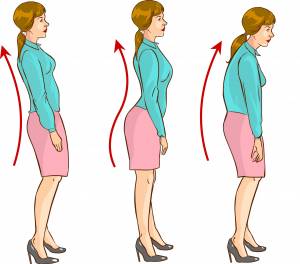Today I am directing my article to all of you athletes out there who like to wear high heels. And I’m going to get right to the point right now:
Stop wearing them.
I know you probably don’t want to hear what I’m telling you, and perhaps you’re even silently cursing right now. But the plain and simple truth is that high heels are awful for your body and lead to more injuries than you might think.
When it comes to staying strong and healthy, consider whether or not fashion is more important than function.
High Heels and Performance
I know what you’re thinking, you train hard, you work out every day, you do your mobility work, so the high heels really can’t be all that bad. It won’t matter so much for you. Well, unfortunately, that’s just not true. In fact, going from high heels to flat shoes and doing explosive movements is going to put you at an even further increased risk of injury.
So, what’s the deal, how can heels be so damaging? In a nutshell: high heels force your body to work in a manner that is completely and entirely backward from your normal mechanics.
These abnormal mechanics happen to both prevent your face from meeting the concrete when you are walking (to keep you balanced) and to compensate for a lack of mobility at the ankle and foot. This then causes a cascade of changes throughout the entire kinetic chain.

There are a number of postural issues that tend to coincide when a person frequently wears high heels.
Foot Mechanics
When you wear heels, your heel is higher than your toes (in some cases, significantly higher). This position doesn’t allow for your ankle to bend upward, which makes striking the ground with your heel difficult to near impossible.
What does this mean? Your foot is stuck in a toe-point position and your calf muscles are shortened for extended periods of time. Because of this, we must find mobility elsewhere in order to be able to walk and propel ourselves forward.
“High heels change your body mechanics and your movement patterns and contribute to numerous injuries to the lower extremity and spine.”
Normally when we walk, our knee is straight when our heel makes contact with the ground. But since we don’t actually have a heel strike when wearing high heels, we have to rely on a bent knee instead to help drive us forward (this bent knee also helps to bring our center of mass back so we don’t fall face forward to the ground). Our hips then become fixed in a constant flexed position and don’t go through their full range of motion, leading to the overuse and shortening of our hip flexors.
This continues to affect things higher up in the body. Our pelvis rotates forward and our lower back becomes excessively forward flexed. This causes changes all the way up to our upper back and neck, since these areas must compensate by extending back in order to keep us from toppling forward.
Compromised Movement and Mobility
And, in case you are wondering, these changes are not good. They will lead to injuries like shortened and tight muscles, joint damage, muscle imbalances, pinched nerves, muscle spasms, uneven wear on the discs and joints of our spine, corns, bunions, muscle strains – and this is just naming a few.

Especially if you are an athlete, consider swapping your heels for footwear that allows for more natural movement.
I hope at this point you are starting to reconsider those forty-hour workweeks in your heels. If I haven’t convinced you yet, there is another point I want to share with you. People who wear high heels on a regular basis are much more likely to suffer from an injury like a muscle strain, even when they are not wearing their heels. In other words, when they are out playing tennis or other sports, going for a run, or just walking around their backyard.
When you walk normally (in flats or barefoot), the muscles and tendons of the leg both stretch and contract like springs. Throw a pair of high heels in the mix, though, and our calf and hip flexor muscles become shortened, putting more mechanical strain on the muscles and providing less ability for the muscles and tendons to stretch. This translates into wearers walking much less efficiently, requiring more energy to cover the same amount of ground, and leading to increased muscle fatigue and an increased likelihood of strains. But get this – this muscle inefficiency continues to occur even once the heels come off. So, even without the heels, you’re more likely to injure yourself if you are a habitual high heel wearer.
Find a New Shoe
As you can see, wearing high heels isn’t good for you. And I’ve barely scratched the surface on the effects of them. We haven’t even touched the foot injuries and deformities that can occur from putting so much pressure on such a small surface of your foot (bunions, corns, nerve impingement, and more) or the mere lack of stability the heels offer, which can lead to falls and rolled ankles. But that could be a whole other article in itself.
“In fact, going from high heels to flat shoes and doing explosive movements is going to put you at an even further increased risk of injury.”
The take-home is this: high heels cause your body to work in a completely backward pattern than it is supposed to. High heels change your body mechanics and your movement patterns and contribute to numerous injuries to the lower extremity and spine. So please, if you’re a regular high heel wearer, try to cut down (as in, just cut them out!), and try to incorporate some flats into your wardrobe. Trust me – your body will thank you!
Check out these related articles:
- Lems Shoes (Product Review)
- 4 Common Foot Injuries in the Athlete
- 3 Ways to Prevent and Heal Foot Injuries
- What’s New On Breaking Muscle Today
Photos courtesy of Shutterstock.






